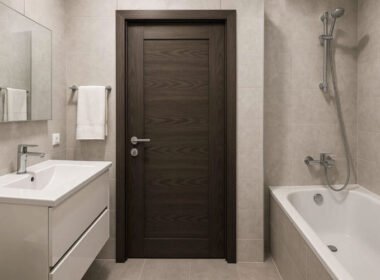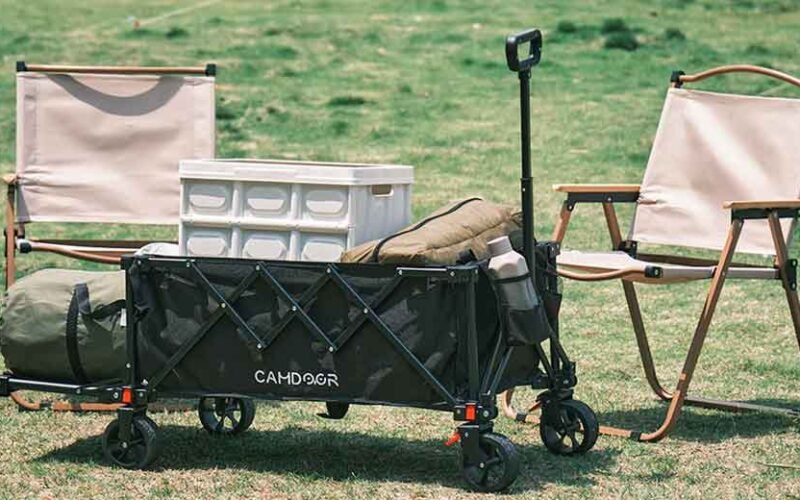Japan is a country blessed with breathtaking natural beauty—from the snow-capped mountains of Nagano to the turquoise waters of Okinawa and the deep green forests of Hokkaido. For many families and outdoor enthusiasts, weekend getaways are not just a pastime but a lifestyle. But whether you’re camping with kids, enjoying a beach picnic, or attending a summer festival, one challenge is always present: carrying all your gear effortlessly.
In recent years, Japanese families have embraced clever ways to make these outings smoother and more enjoyable. Among the most practical solutions? A surprisingly simple tool: the outdoor wagon.
The Japanese Love for Compact, Efficient Outdoor Gear
Minimalism and functionality are cornerstones of Japanese design, and that extends to how people approach outdoor life. Urban dwellers in Tokyo or Osaka often have limited storage space, so when they shop for キャンプ ギア or picnic equipment, portability is key. Every item needs to be foldable, lightweight, and multifunctional. That’s why outdoor products designed for convenience—like collapsible tables, inflatable mats, or compact stoves—are particularly popular.
Enter the utility wagon. Compact when folded, spacious when open, and rugged enough to handle uneven terrain, it fits seamlessly into the Japanese outdoor aesthetic. You’ll now see it not just at campsites, but also in public parks, hanami spots during cherry blossom season, fireworks festivals, and even on beach days in Enoshima or Kamakura.
Weekend Camping: From Burden to Breeze
In Japan, camping is more than a summer activity. It’s a four-season tradition. Families head to riversides in spring, mountain campsites in summer, foliage-filled forests in autumn, and even snow camps in winter. One thing that doesn’t change, however, is the sheer amount of stuff people bring—tents, sleeping bags, cooking equipment, food, folding chairs, kids’ toys, and sometimes even portable toilets.
Previously, this meant multiple trips from the car to the site. But now, with an outdoor wagon, one or two loads are often enough. Wagons designed for the Japanese market often feature heavy-duty wheels that work on gravel, sand, or grassy areas, and they fold down to fit easily in kei cars or narrow apartment closets.
Beach Days, Festivals, and Picnics: The Wagon’s Unexpected Versatility
While camping is the obvious use case, the outdoor wagon has become a staple for urban families as well. In spring, families and groups of friends gather in places like Ueno Park, Yoyogi Park, or Osaka Castle Park for hanami. They lay out large tarps, bring elaborate homemade bentos, and spend hours enjoying the scenery.
Bringing all of this through crowded train stations and busy streets used to be a hassle. Now, アウトドア ワゴン with soft rubber tires and collapsible handles are commonly seen rolling along sidewalks and train platforms. Some models even include insulated storage compartments or drink holders, perfect for carrying sake and cold beverages.
Summer brings fireworks festivals—hanabi taikai—and long walks to riverside viewing areas. Again, the wagon steps in as a mobile base camp. Families can load cushions, fans, picnic mats, and food, all in one tidy container. In beach areas like Shirahama or Zushi, it’s become a go-to for transporting tents, coolers, and sand toys.
Designed for the Japanese Market: Compact but Capable
Outdoor wagons popular in Japan differ slightly from their Western counterparts. Here’s why they stand out:
- Compact foldability: Most designs can be collapsed with one hand and stored in small cars or apartments.
- Lightweight frames: Aluminum or reinforced plastic keeps the unit strong but easy to lift.
- Weather-resistant fabrics: With Japan’s humid summers and sudden rain showers, wagons must withstand moisture.
- Quiet wheels: To avoid disturbing public spaces, wagons often use soft rubber tires that minimize noise.
- Safety features: Many models include brakes, reinforced sides, and extra straps to secure loads—particularly important for families with toddlers.
While many international brands sell outdoor wagons, Japanese consumers tend to favor domestic or Asia-specific models that are tailored to their lifestyle needs. It’s not uncommon to see custom colors, anime-inspired patterns, or wagons that double as seating for children.
Sustainable Living Meets Outdoor Life
Sustainability is becoming a strong value in modern Japan, and the outdoor wagon fits this philosophy in more ways than one. Instead of relying on disposable bags or plastic carts, reusable wagons help reduce waste. More people are also incorporating them into their zero-waste picnic or camping kits, alongside stainless steel utensils, refillable water bottles, and beeswax food wraps.
Some eco-conscious brands in Japan are even using recycled materials for wagon fabric or packaging, appealing to a growing demographic of environmentally aware consumers.
Beyond Recreation: How Wagons Help with Everyday Life
Interestingly, many people in Japan now use outdoor wagons beyond recreation. Parents with small children use them for school events, grocery shopping, and trips to the park. Urban gardeners carry supplies to rooftop gardens. Even senior citizens are starting to use them for transporting heavy items to and from the local community center or market.
As Japan’s population continues to age, practical tools that reduce physical strain will only become more important. In that sense, the outdoor wagon is not just a convenience—it’s a smart lifestyle upgrade.
Conclusion: One Simple Tool, Countless Adventures
In a country that values thoughtful design, space-saving solutions, and nature connection, the rise of the outdoor wagon is no surprise. From mountain campsites to seaside picnics, and from cherry blossom picnics to fireworks festivals, this humble utility cart has become a trusted companion for Japanese families, campers, and city dwellers alike.
So next time you’re packing for a day out—or even just a walk to the park—consider whether a wagon might make the journey easier. You’ll likely find that once you use one, there’s no going back.










